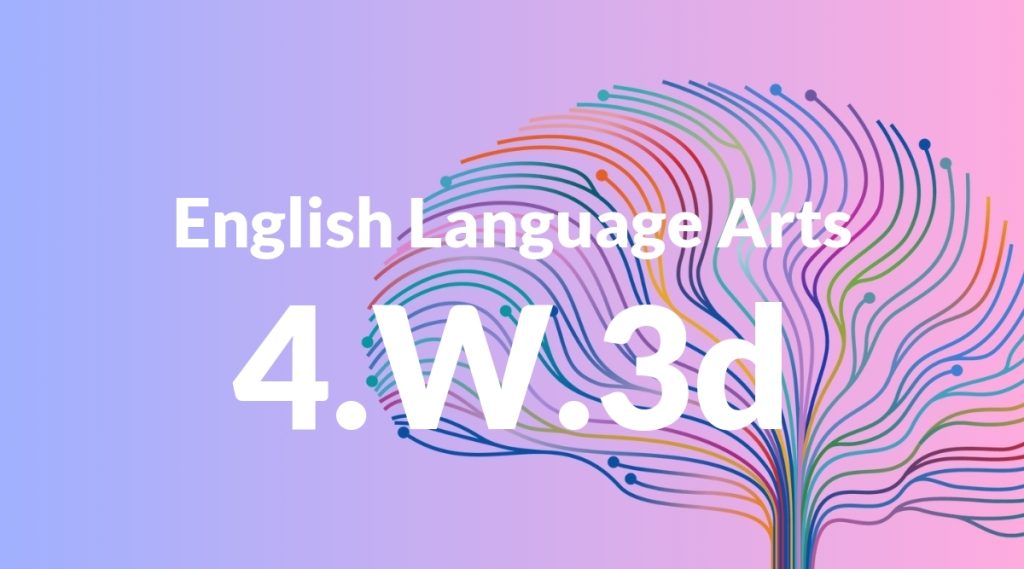Standard: 4.W.3 – Write narratives to develop real or imagined experiences or events using effective technique, descriptive details, and clear event sequences.
Grade level: Grade 4
Subject: English Language Arts
Domain: Writing
Teacher Overview
This standard emphasizes the importance of narrative writing, which helps students develop their storytelling abilities and use of descriptive language. Mastering this standard is crucial for students as it lays the foundation for more advanced writing skills in higher grades. Students should be familiar with basic sentence structure, descriptive language, and logical sequencing of events. They should also have experience with writing simple stories.
After mastering this standard, students will be able to write more complex narratives, incorporating dialogue, varied sentences, and advanced descriptive techniques to enhance their storytelling.
Common Misconception 1
One common misconception is that narratives are only fictional. This is incorrect because narratives can also be based on real experiences or events. By understanding this, students can appreciate the versatility of narrative writing.
Intervention 1
Introduce various narrative examples, including personal stories and historical events, to demonstrate the broad scope of narrative writing. Encourage students to write about their own experiences as well as fictional stories.
Common Misconception 2
Another misconception is that narratives do not need a clear sequence of events. This is incorrect because a well-structured narrative requires a clear beginning, middle, and end to make sense to the reader.
Intervention 2
Use graphic organizers to help students plan their narratives. Teach them to outline their stories with a clear structure, ensuring that events are logically sequenced.
Prerequisite Knowledge
Students should have a basic understanding of sentence structure, the use of descriptive language, and the ability to sequence events logically.
Subsequent Knowledge
Students will develop the ability to write more complex narratives, including the use of dialogue, varied sentence structures, and advanced descriptive techniques.
Instructional Activities
- Brainstorming sessions for story ideas
- Using graphic organizers to plan narratives
- Writing and sharing personal stories
- Peer review sessions to give and receive feedback
- Creating storyboards to visualize event sequences




